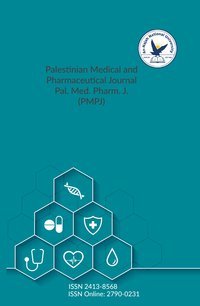Investigating the Diverse Therapeutic Potential of Hypericum triquetrifolium Aerial Parts in Palestine: Ranging from Examining Metabolic Enzyme Inhibition To Neuroprotective Effects
Authors:
Article info
2023-11-06
2023-10-08
None - None
Keywords
- α-Amylase
- GluA2
- free radical scavenging
- anti-lipase
- Hypericum Triquetrifolium
- AMPA receptor
Abstract
The buildup of free radicals and metabolic abnormalities is associated with several human illnesses. The use of antioxidants has the potential to mitigate the detrimental effects of free radicals. At the same time, inhibiting enzymes such as lipase and α-amylase show promise in treating metabolic disorders, including diabetes and obesity. Furthermore, the modulation of α-amino-3-hydroxy-5-methyl-4-isoxazolepropionic acid (AMPA) receptors is paramount in preserving neuronal integrity and regulating brain processes. Therefore, searching for natural plant inhibitors is of utmost importance. This research aimed to examine the hydrophilic extract derived from the aerial portions of Hypericum triquetrifolium to assess its potential as a medicinal agent. The extract's capacity to inhibit α-amylase, lipase, and scavenge free radicals was thoroughly evaluated using established biochemical tests in conjunction with whole-cell patch clamp electrophysiological recordings. The findings of our study indicate that the tested substance had remarkable efficacy, outperforming traditional medications in terms of inhibition. The IC50 values for the substance were determined to be 75.85 ± 3.88 µg/ml, 630 ± 2.81 µg/ml, and 6.16 ± 5.69 µg/ml, respectively, for the three different pharmaceuticals. Significantly, our research findings indicate that the extract did not exhibit direct inhibition of AMPA receptor subunits. However, it did have a notable influence on their kinetics, particularly on the rates of desensitization and deactivation. This complex botanical extract shows great promise in treating metabolic disorders, neurodegenerative diseases, and illnesses caused by oxidative stress. Furthermore, its impact on the kinetics of AMPA receptors highlights its ability to protect and maintain the integrity of brain cells.
Investigating the Diverse Therapeutic Potential of Hypericum triquetrifolium Aerial Parts in Palestine: Ranging from Examining Metabolic Enzyme Inhibition To Neuroprotective Effects
المؤلفون:
معلومات المقال
2023-11-06
2023-10-08
None - None
الكلمات الإفتتاحية
- α-Amylase
- GluA2
- free radical scavenging
- anti-lipase
- Hypericum Triquetrifolium
- AMPA receptor
الملخص
The buildup of free radicals and metabolic abnormalities is associated with several human illnesses. The use of antioxidants has the potential to mitigate the detrimental effects of free radicals. At the same time, inhibiting enzymes such as lipase and α-amylase show promise in treating metabolic disorders, including diabetes and obesity. Furthermore, the modulation of α-amino-3-hydroxy-5-methyl-4-isoxazolepropionic acid (AMPA) receptors is paramount in preserving neuronal integrity and regulating brain processes. Therefore, searching for natural plant inhibitors is of utmost importance. This research aimed to examine the hydrophilic extract derived from the aerial portions of Hypericum triquetrifolium to assess its potential as a medicinal agent. The extract's capacity to inhibit α-amylase, lipase, and scavenge free radicals was thoroughly evaluated using established biochemical tests in conjunction with whole-cell patch clamp electrophysiological recordings. The findings of our study indicate that the tested substance had remarkable efficacy, outperforming traditional medications in terms of inhibition. The IC50 values for the substance were determined to be 75.85 ± 3.88 µg/ml, 630 ± 2.81 µg/ml, and 6.16 ± 5.69 µg/ml, respectively, for the three different pharmaceuticals. Significantly, our research findings indicate that the extract did not exhibit direct inhibition of AMPA receptor subunits. However, it did have a notable influence on their kinetics, particularly on the rates of desensitization and deactivation. This complex botanical extract shows great promise in treating metabolic disorders, neurodegenerative diseases, and illnesses caused by oxidative stress. Furthermore, its impact on the kinetics of AMPA receptors highlights its ability to protect and maintain the integrity of brain cells.
An-Najah National University
Nablus, Palestine
Nablus, Palestine
- P.O. Box
- 7, 707
- Fax
- (970)(9)2345982
- Tel.
- (970)(9)2345560
- (970)(9)2345113/5/6/7-Ext. 2628
- [email protected]
- EIC
- Prof. Ismail Warad
